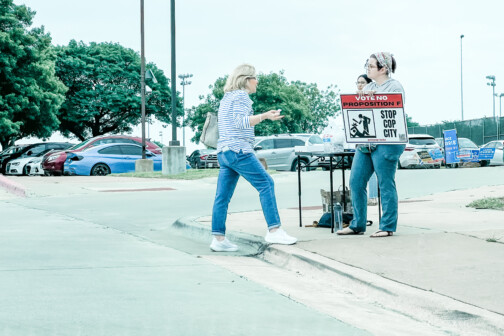I’ve worked in Dallas’ urban commercial real estate for many years and have had a front row seat to see the Dallas Arts District mature. The neighborhood has evolved from one to two arts venues in the mid-1980s to a celebrated cultural district welcoming more than 3 million visitors and artists each year. This evolution speaks volumes about how Dallas has grown up as a city and is showing commitment to and investment in its public art.
A great example of this commitment and an overall catalyst for growth in Dallas has been Klyde Warren Park. Not only has it made the Arts District more accessible with the opera simulcasts, festivals, and other arts programming, but it has expertly connected Uptown with Downtown and the Dallas Arts District. This commitment continues through the private developments in the Arts District, one of which I’m very familiar with—HALL Arts. Craig Hall chaired the fundraising board for the DMA in the 1980s, and years later he was able to get district stakeholders on board with his vision of a mixed-use development in the heart of the Dallas Arts District—a place where visitors, artists, and patrons could work, live, shop, and dine among the cities most celebrated venues. Today, KPMG Plaza at HALL Arts, the Texas Sculpture Walk, and restaurants, including Stephan Pyles Flora Street Café, have created more life in the Arts District, and plans are underway for our second phase, which will include a boutique hotel and luxury residential high-rise.
Private investors working together with cultural institutions and the City of Dallas were critical to help realize the full potential of the district. In Dallas, our neighborhoods have always had specific uses, whether it’s Downtown, a place to work and then commute home, or the Dallas Arts District, a place to see shows and exhibits then depart. Today, this is changing as development has expanded and the city has championed connectivity between its neighborhoods. The makeup of the Arts District has diversified—we have churches, an arts magnet school, a federal building, architecturally celebrated arts and cultural venues, restaurants, residential options, and high-quality office buildings.
Not only has the physical make-up of the neighborhood changed, but the diversity of people living, working, and playing in the Arts District has grown tremendously. When walking through the district today, you see a microcosm of a city—a businessman walking next to a student, walking next to an artist, walking next to a parishioner—a true urban environment stitched together throughout 19 blocks and 68 acres. You see people of all ages, races, genders, shapes, and sizes living and breathing in the same space, creating a rich identity in and of itself. We’re blazing new trails in Dallas, and we’re all united by the common thread of our neighborhood.
Kim Butler is the director of leasing at Hall Group.






